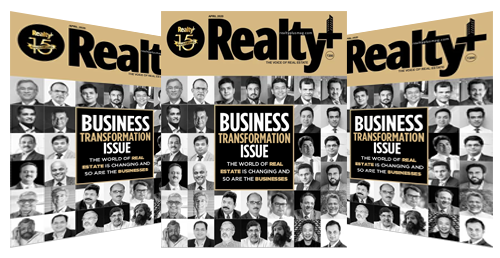Elaborating on the era of co-creation, which represents the next level of design collaboration, Deben Moza, Senior Executive Director-Head, Project Management Services, Knight Frank (India) Pvt. Ltd., said, “Harnessing the power of collaboration means merging diverse viewpoints to create something far greater than what any individual could achieve alone. In addition, technology can be utilized in numerous ways, but the ultimate aim should be to preserve local craftsmanship and materials.”
Praveen Thampi, Creative Director, The Ministry Of Light, added, “Indeed co-creation brings together 31 experts from various fields to collaborate on making a project truly exceptional, but this also requires lead designers and architects to be especially open-minded and capable of recognizing the importance of diverse disciplines. Another big challenge is when technological necessities and aesthetic preferences collide.”
Explaining the key benefits of co-creation, Priya Daniel, Principal Architect, Five Scale Design, stated, “Collaboration fosters continuous learning from a diverse group of people, culminating in innovative and sustainable results. It not only boosts efficiency, but also ensures timely project delivery, minimizing errors through effective roadblock tracking and most importantly meeting everyone's needs, especially the end users. Challenges could be cultural differences among various country professionals, different software and technology and mindsets of the contractors and on-ground teams.”
Ar. Rajendra Kumar, Architect, Urbanist, Curator, Author, Local Ambassador, Royal Institute of Brit- ish Architects (RIBA), UK, added, “Co-creation, a term that's become popular recently, is reminiscent of what we once called participatory architecture two decades ago. This concept challenges the traditional ego of architecture by involving various stakeholders in the process. In large-scale projects like mass housing, identifying and engaging with stakeholders—who may not directly benefit from the outcome— presents a unique challenge. From my experience of collaborating on global projects at institutions like MIT and Harvard, I have learnt the importance of involving every stake- holder to shape project outcomes effectively.”
Vaishali Shankar-Mangalvedhekar, Partner, SJK Architects, expressed, “Architects, including myself, don't just create art; we build spaces for people to enjoy and are trained to collaborate with numerous stakeholders. A traditional huband-spoke method can lead to frustration and constant design rejections, while a networked ap- proach is akin to interconnecting mushroom filaments, resulting in seamless working, faster approvals, and a more effective process.”
Smita Tiwari, Founder, Articlad, agreed “Working with various stakeholders in tandem has benefits as well as challenges. Collaboration brings innovative solutions, and customization is the key to success. Embracing open communication and new technologies like AI allows designers to outpace many established competitors.”
THE AGE OF AI
The convergence of architec- ture, design, and technology under the influence of AI is not just transforming how we create and experience spaces, but also shaping our vision for future buildings. As per John Alok Decruz, Director, Morphogenesis, “AI is transforming both the design and production stages. Yet, despite these advancements, many of us still struggle to fully grasp its potential. The pace is relentless—either we keep up or risk falling behind.”
Dr. Ponni M. Concessao, Principal Architect & Founder, Ponni & Oscar + Rahul Architects, shared another perspective, “While AI accelerates repetitive tasks, it cannot replace the human mind's unique ability to consider cultural and psychological factors in design decisions. Having said that, in markets like India, where clients expect consistent results at the same fees, using advanced tools like AI-powered BIM and digital twinning can become useful."
Akhil Ganatra, Managing Director, Clancy Global, articulated, “To stay competitive, we must enhance the efficiency of our operations. Utilizing advancements like open BIM and eliminating unnecessary complexities allows us to dramatically reduce design development time. Leveraging AI, especially for MEP aspects makes physical production much faster, while design remains a creative process. Global reports highlight that only 31% of projects stay within budget and 25% finish on time. This is a problem that we can tackle with Digital Twin technology in complex projects.”
Amrita V Chowdhury, Co-Founder & CEO, Gaia, pointed out, “We are already moving towards advanced building management systems with sensors and automation for real-time visualization and operation.Older buildings are being retrofitted with specific sensors and meters to monitor and control utilities in real-time. The field is expanding rapidly in India with more buildings integrating automation from the design stage or through retrofitting. However, AI is still in its early stages, and ROI considerations are causing a slower adoption rate.
Nagavarma, Vice President, Business Development –NCL Doors, said, “Standardization is a real challenge. Just imagine, if we produce around 10,000 doors, about 7,000 to 8,000 of them would be different sizes. Some level of standardization could greatly benefit both the in- dustry and manufacturers. It would allow us to scale better than we currently do. Standardization could truly revolutionize the construction process for everyone involved while increasing efficiency.”
Kuldeep Sehrawat, President- Architecture & Design, Tribeca Developers, added, “The world is rapidly advancing towards AI and innovative technologies like AR/VR, revolutionizing how we present and sell products to customers. These technologies not only improve customer satisfaction but also speed up design decisions and project delivery. We're excited about integrating these advancements in construction to streamline processes and enhance efficiency.”
The experts were unanimous that technology is here to stay and collaboration is the way forward to create user-centric spaces. All stakeholders will have to embrace technology sooner than later, to unite various fields, particularly as we advance towards AI-powered lighting and hydrogen-powered, carbon-neutral communities. The real question isn't whether to use technology or to collaborate, but how to manage risks and challenges.
It’s essential tointegrate different technologies and consultant expertise, linking design, materials purchasing, and construction seamlessly. This unified approach will drive better development and should include government agencies to ensure superior outcomes.
Young professionals must embrace technology to stay competitive internationally, but never abandon the power of original thinking. AI and computers can't replicate the unique spirit of an architect; they should be tools, not crutches.
With advanced AI, we can analyze vast amounts of data and user preferences, conducting simulations before construction.Prefabricated buildings and enhanced AI tools allow us to visualize multiple iterations early on, enabling stakeholders to foresee project directions andpotential roadblocks.
Respecting eachother's expertise is essential, for example, craftsmen possess skills that architects might never grasp.Zoom has shrunk our world, but unverified information online requires us to be discerning. We are living in an era of co-creation and going by the industry experts, collaborations among varied design professionals, technology interventions and in-sync policies for development are the essentials of future progress.













